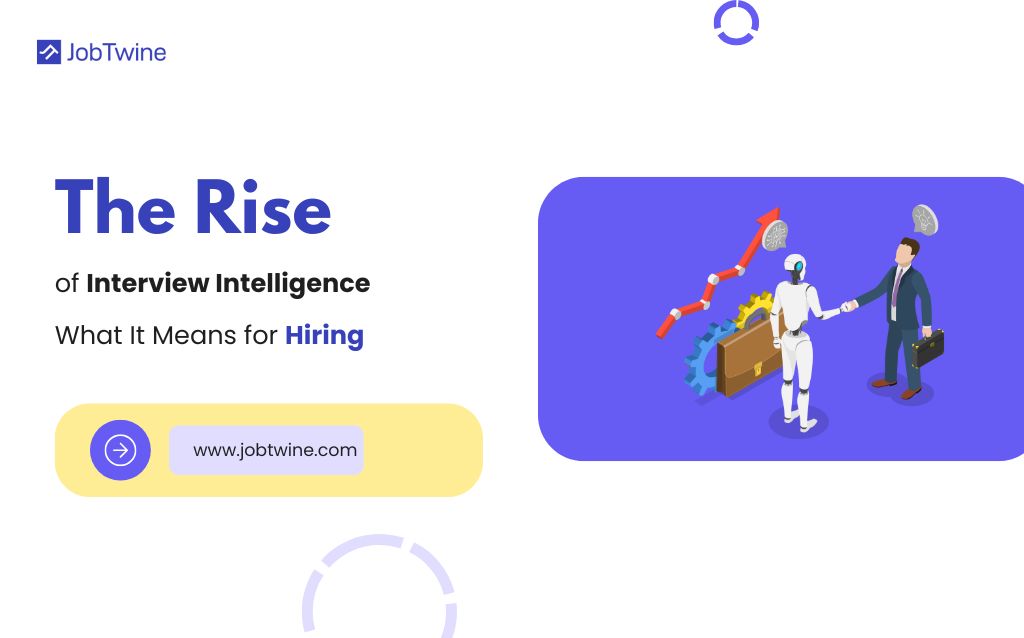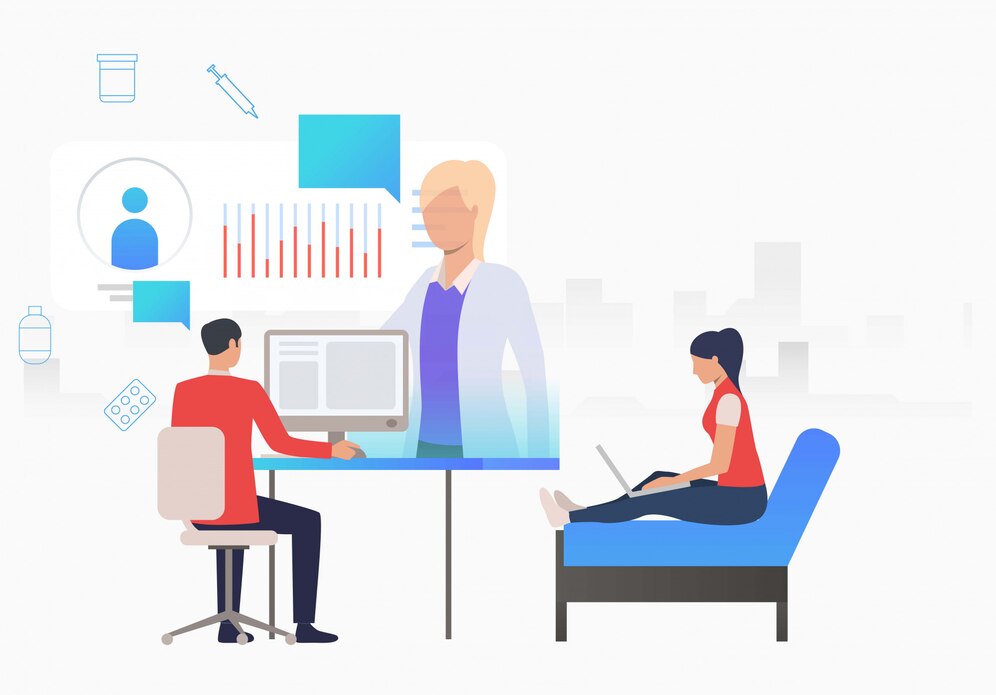When you think of an interview today, you probably picture a hiring manager asking questions, a candidate answering, maybe a tech test, maybe a culture round. What if I told you that the future of interviewing isn’t just this person-to-person exchange, it’s powered by something more: interview intelligence.
By interview intelligence I mean the idea of an interview process enhanced by the insights, automation, and fairness-driven capabilities of AI. More than just video tools, more than scheduling software, think deep analytics, smarter questions, more consistent decision-making, and fewer wasted rounds.
In this post, we’ll explore what interview intelligence means, why it matters now, and how platforms like AI Interviewer (our own tool) are helping hiring teams make smarter, faster, fairer decisions.
1. What is “Interview Intelligence”?
The term may sound buzz-y, but it has substance. Interview intelligence refers to the integration of technologies, especially AI and analytics, into the interview lifecycle so that instead of treating each interview as an isolated event, you treat it as part of a continuous, data-driven hiring flow.
For example:
- AI-powered tools that transcribe and analyse candidate responses during video interviews, drawing out patterns and insights.
- Interview platforms that provide structured guides, help interviewers stay on track, and ensure consistency across rounds.
- Dashboards that show you interviewer behaviour (Are they asking the same questions? Are some candidates being screened unfairly?), and candidate fit metrics (skills + culture + potential).
In short: interview intelligence means flipping the traditional model of “one round → next round → human decision” into “interview as a source of refined data, insight and alignment”.
2. Why the Time is Now
Several forces are converging to make this shift urgent for hiring teams:
- Volume and speed: Many organisations are hiring at scale (especially in tech, GCCs and global teams). Doing dozens or hundreds of interviews manually means delays, inconsistent quality, and fatigue. Interview intelligence helps speed things up and keep things fair.
- Candidate experience matters: A candidate doesn’t want to feel like they’re repeating the same questions round after round, or stuck waiting for days. According to research, 82% of recruiters say they’ve lost quality talent because the interview process was poor.
- Bias and quality of hire concerns: Traditional interviews rely a lot on gut feel and memory. That can mean inconsistency and bias. The good news: interview intelligence helps surface what actually happened during the interview and helps hold all parties accountable.
- The review-and-data era: Hiring leaders aren’t satisfied just with “We interviewed 5 people and hired 1”. They want to know “How strong were the finalists? Did the interview process help us hire the best candidate? Could we reduce rounds and still achieve the same outcome?” Interview intelligence gives you that lens.
3. What Interview Intelligence Looks Like in Practice
Let’s walk through what a modern interview process could look like when infused with intelligence and then contrast with the old way.
Old way:
- Candidate applies → recruiter screens → phone screen → tech lead interview → manager interview → culture fit round → decision.
- Interviewers have varying skills, use different questions. Notes scattered, some lost. Candidate experiences are inconsistent. Decision sometimes based on “gut feeling”.
New way (with interview intelligence):
- Role requirement & job-story defined once; platform gives the interviewer a structured guide tailored to the role.
- Candidate enters a video interview (live or asynchronous) via an AI-enabled platform like the one from JobTwine.
- AI transcribes responses in real time, flags key behaviours, summarises strengths/weaknesses, and sends insights to hiring panel automatically.
- Interviewers use a live dashboard that helps them keep to the structured question set, avoid repetition, and follow best-practice guidelines.
- After interview: a decision-ready summary is delivered (scorecards + insights + recommended next steps) so hiring team can decide faster, often reducing rounds.
- Continuous feedback loops: Did this interview set work? Did certain question patterns correlate with performance? The system learns and refines.
4. How JobTwine Brings Interview Intelligence to Life
At JobTwine we believe that every hiring process should be efficient, consistent and fair and built around human judgment, not replaced by it. That’s why we built the AI Interviewer platform with these features in mind:
- A unified video interview experience where candidates can engage asynchronously or live, reducing scheduling bottlenecks. (One less round wasted!)
- Built-in interview guides and templates so interviewers stay aligned and repeated questions or varying styles don’t hamper quality.
- AI-powered transcription and analytics so you get summaries, flagged competencies, and candidate signals faster, freeing your hiring team’s time for what matters.
- Integration with your ATS and hiring workflow so you don’t end up with fragmented systems.
- A design that supports interviewer training and continuous improvement, not just of candidates, but of your interviewers.
By applying this intelligence, you’re able to reduce the number of rounds (thus reducing cost per hire), improve the experience for candidates, and make confident decisions backed by data. (In fact, we’ve seen scenarios where technical roles drop from 4 rounds to 2–3 with no compromise on quality.)
5. Benefits You Can Count On
When you move to an interview intelligence model, here are some of the outcomes you’ll likely see:
- Speed: Less waiting, fewer hand‐offs, more streamlined rounds.
- Cost savings: Each eliminated interview round saves time and money (fewer interviewer hours, fewer opportunities lost).
- Better quality of hire: With more structured and consistent interviewing, you reduce mis-hires and improve new-hire outcomes. Aptitude Research+1
- Better candidate experience: Transparent, structured, timely. Candidates feel the process is professional, fair and modern.
- Reduced bias and more fairness: Standardised guides + captured analytics = fewer “who asked what” variables. Aptitude Research+1
- Continuous improvement: You’re not “just interviewing”, you’re building an intelligence-loop that learns and improves your hiring process over time.
6. Pitfalls to Avoid (and How to Do It Right)
As with any transformation, things can go sideways if you ignore the human element. A few warning flags:
- Over-reliance on AI “judging” candidates without human oversight. Smarts don’t replace human judgment. A recent academic study found that while LLMs perform impressively, they are not yet reliable on their own, human-in-the-loop remains essential.
- Ignoring bias risk. Just because you use AI doesn’t mean you’re safe from bias. The tech still needs thoughtful implementation, oversight, and fairness checks.
- Treating the candidate as “data point,” and forgetting the human experience. Even the smartest process must still feel human.
- Losing sight of alignment. If your job description, interviewer guide, and evaluation criteria aren’t aligned, the smartest interview technology can’t save you.
- Thinking this is “set it and forget it.” Interview intelligence requires evolution: refining questions, analysing interviewer effectiveness, adapting to business needs.
7. What Hiring Leaders Should Do Today
If you’re a TA leader, HR Head or Recruitment Manager thinking “how do we embrace interview intelligence without disruption?” here are three pragmatic steps:
- Audit your current interview process
- How many rounds do candidates go through for this role?
- Are questions standardised across panels?
- How long from interview to decision?
- What feedback do candidates give about the process?
- How many rounds do candidates go through for this role?
- Define where you want to improve
- Do you want fewer rounds? Faster decisions? Better first-year retention? Higher quality of hire?
- Choose key metrics that matter to you. Maybe “reduce rounds by 25%”, “improve candidate NPS” or “reduce time-to-offer by 30%”.
- Do you want fewer rounds? Faster decisions? Better first-year retention? Higher quality of hire?
- Select a partner/tool with intelligence built-in (not just video)
- Look for platforms that integrate video + analytics + interview guidance.
- For example, JobTwine’s AI Interviewer platform is built to deliver that kind of intelligence.
- Make sure you embed human-in-the-loop, maintain fairness, and monitor for bias over time.
- Look for platforms that integrate video + analytics + interview guidance.
Final Thoughts
The world of hiring is evolving fast. What used to be a “phone-screen → technical round → final round” motion is becoming streamlined, smarter and more aligned with business impact. That shift is powered by interview intelligence.
For hiring teams willing to embrace it, the reward is twofold: they get faster, better, fairer hiring. And candidates get a modern experience that reflects today’s talent-driven market.
If you’re ready to explore what interview intelligence can do for your hiring process, drop us a demo link at AI Interviewer, we’d love to show you how fewer rounds + more insight = better hires.
Here’s to interviews that work for people, not against them.



